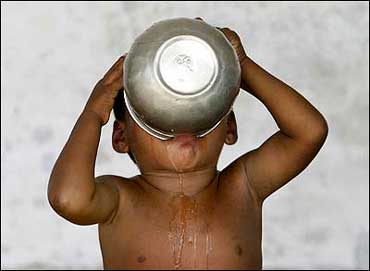
India has achieved the Millennium Development Goal for drinking water by providing 84 per cent of its rural population with access to improved sources of water, Rural Development Minister C P Joshi said in New Delhi on Tuesday.
However, the country is facing a tremendous challenge in sustaining drinking water security in rural areas as most water sources are ground water based and have been overexploited for agriculture and industry besides being subjected to untreated sewage, he said.
"India has achieved considerable progress in providing clean and safe drinking water in most rural areas of the country. I am happy to say that we have achieved the MDG for drinking water. However, there is much to achieve. Our goal is to provide every household with an improved source of drinking water by 2012," Joshi said.
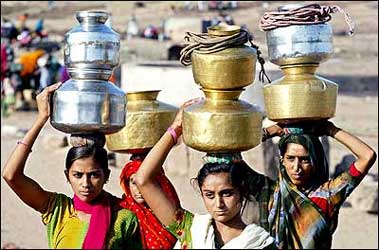
The Millennium Development Goals are eight international development goals that all 192 United Nations member states and at least 23 international organisations have agreed to achieve by the year 2015.
A recent report by the World Health Organization and United Nations International Children's Fund said that the world is on track to surpass the Millennium Development Goal for drinking water access, but will fall short by one billion people for sanitation if current trends continue.
The report also notes that access to an improved water source does not mean access to a quality water source.
The report finds that 2.6 billion people, or more than one-third of the world's population, do not use improved sanitation.
While progress has been made in northern Africa, Southeast Asia and East Asia, large parts of South Asia and Sub-Saharan Africa go without proper facilities.
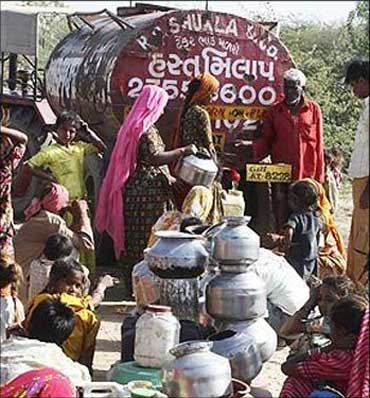
The goals focused on poverty, health, hunger, education and gender equality, with the water and sanitation target aiming to half the proportion of people without access to safe drinking water and basic sanitation. This goal uses 1990 as a baseline year for comparison.
Global access to an improved water source, defined as being protected from outside contamination, exceeds MDG targets.
Nearly 1.7 billion people have gained new access since 1990. Improved sources include piped household connections, protected wells and springs, public taps, and boreholes.
Joshi said over exploitation of ground water sources is posing a "growing" threat to the country's drinking water security.
"We are, therefore, moving away from exclusive dependence on groundwater to reviving traditional water bodies and to the practice of collecting rain water, practices that were neglected when the hand-pump revolution came up."
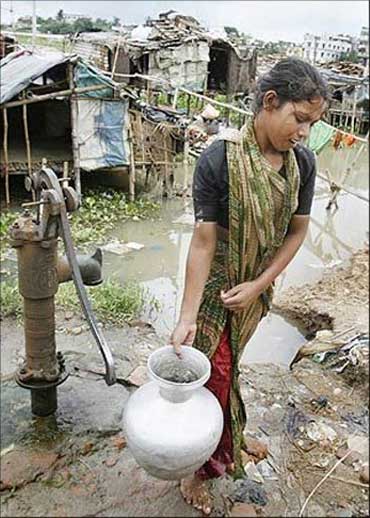
There have also been "heartening" examples of community ground water monitoring and crop water budgeting in Andhra Pradesh and elsewhere, "models of which we hope to replicate on a larger scale to avoid over-drawing the ground water resources," he said.
Listing the other challenges, Joshi said government has to meet the increasing demand from rural areas to provide piped water and household tap connections.
"Only about 12 per cent of the rural households had tap connections in 2005. Our goal is to move up the water ladder from hand pumps to piped water supply through public taps and then to household tap connections culminating in continuous metered supply of safe water," he said.
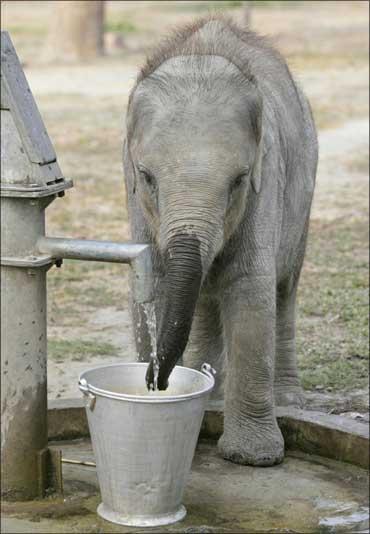
The WHO/UNICEF report states that open defecation, the most unsanitary behavior, is declining.
The report also found wide gaps between coverage in rural and urban areas for both drinking water and sanitation.
More than eight out of ten people without improved water sources and seven out of ten people without adequate sanitation live in rural areas, according to the report.
Joshi said the government is also working to ensure an open defecation free rural India by 2012 through the Total Sanitation Campaign, he said, adding the campaign has so far seen an increase in sanitation coverage.
"Between 2000 and 2008, 104 million people adopted improved sanitation in India of which 71 million were from rural India," he said, adding the total number of those opting for improved sanitation in India in the last two decades was more than the 2008 population of UK, France and Germany combined.